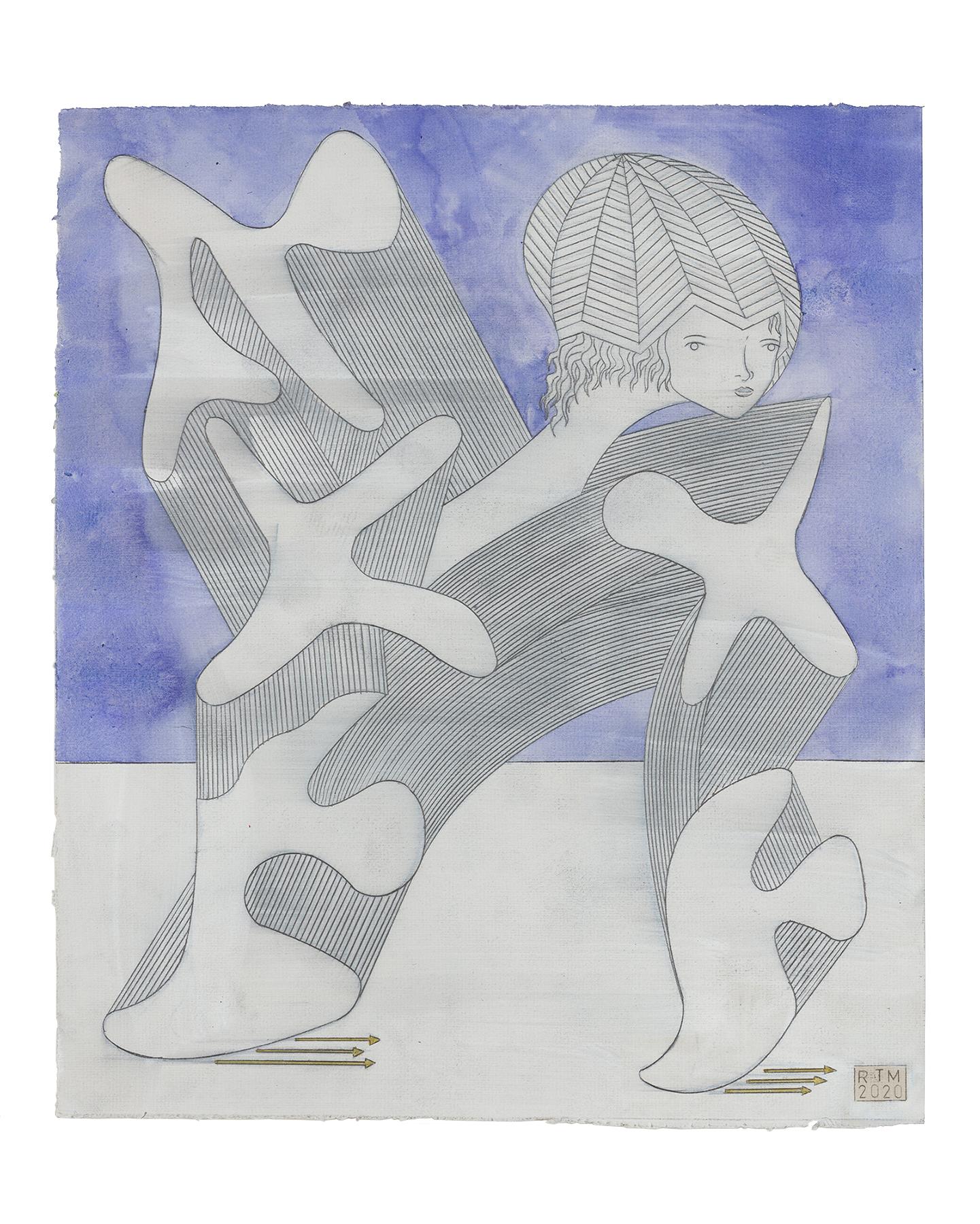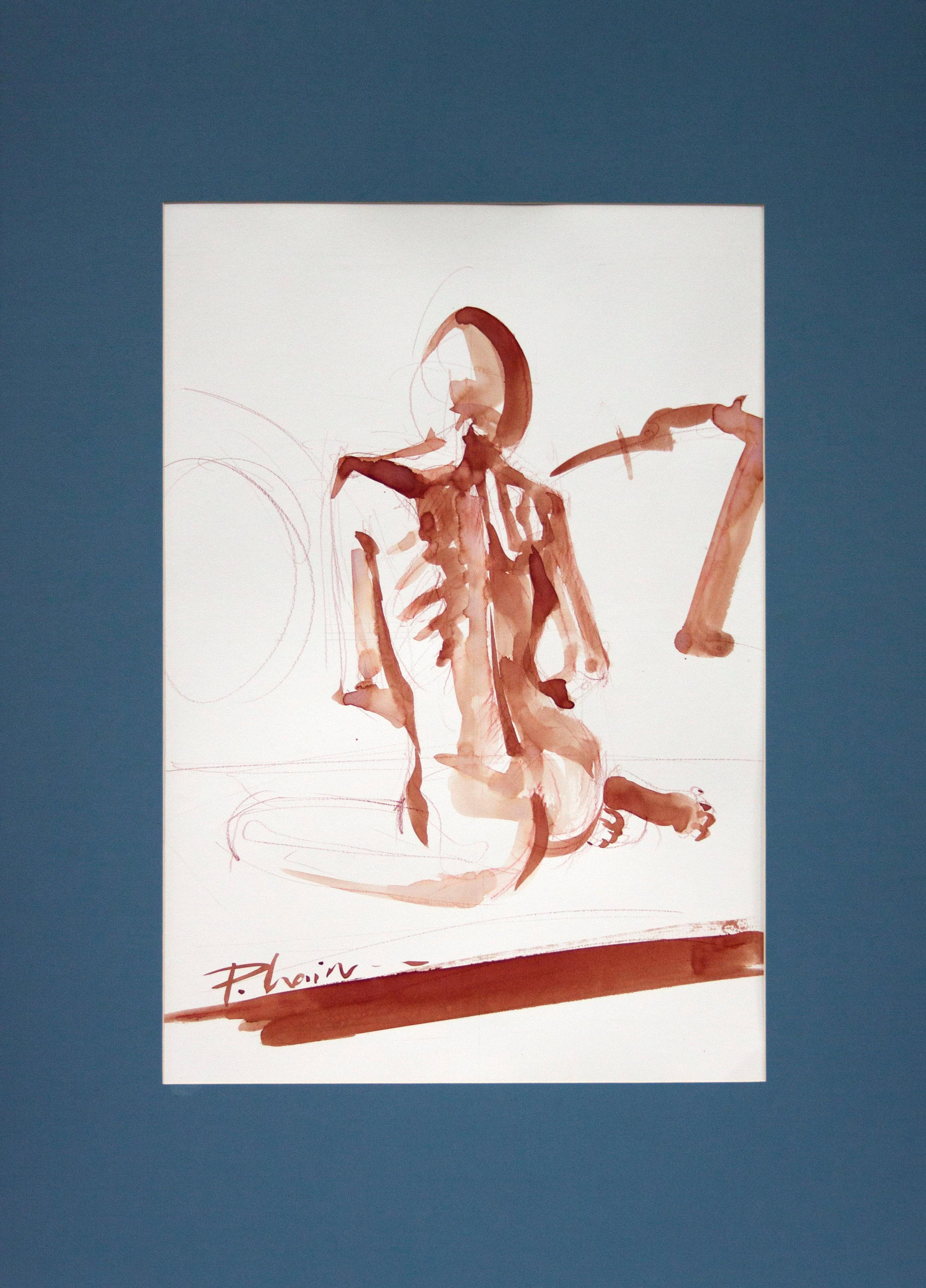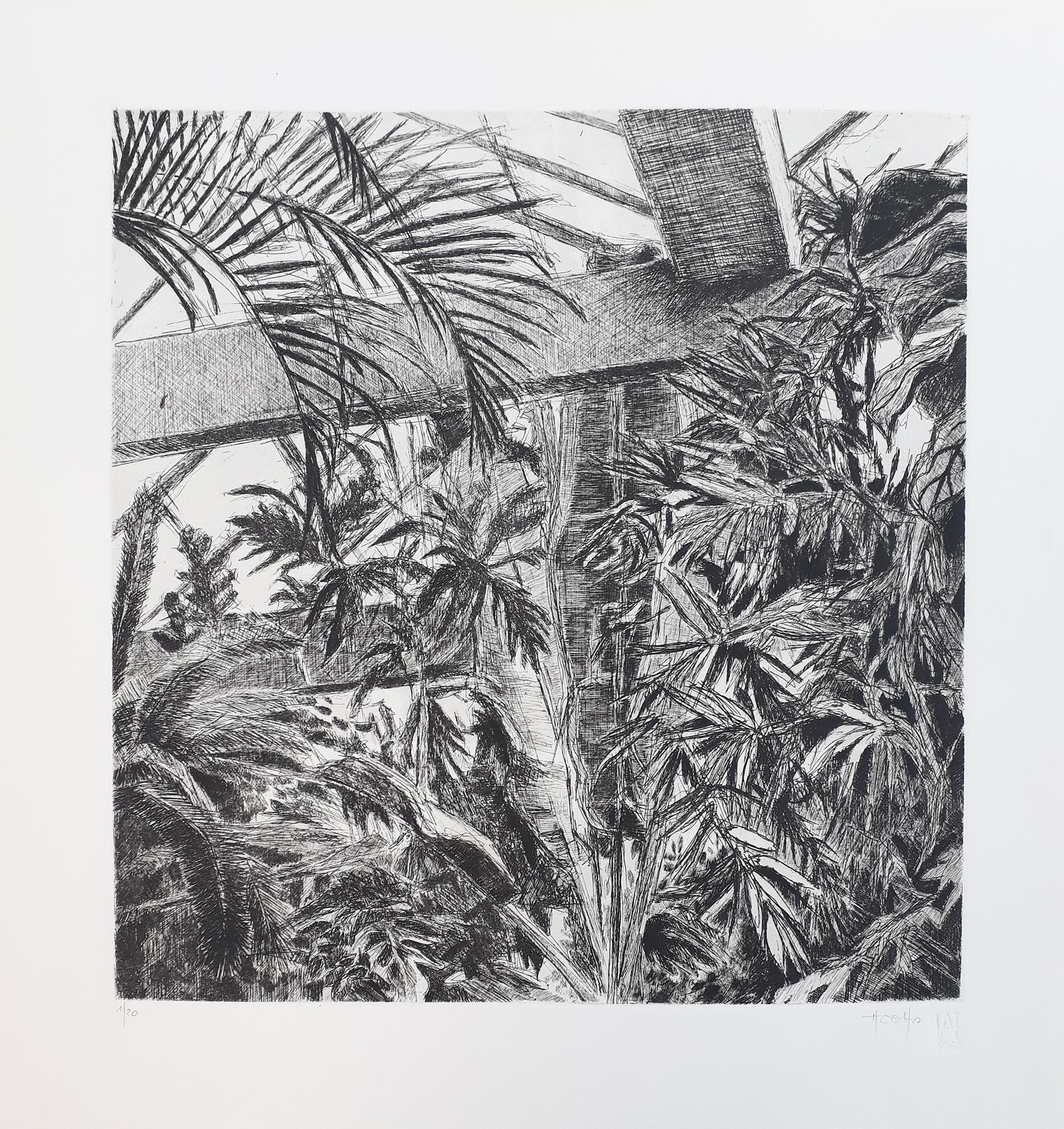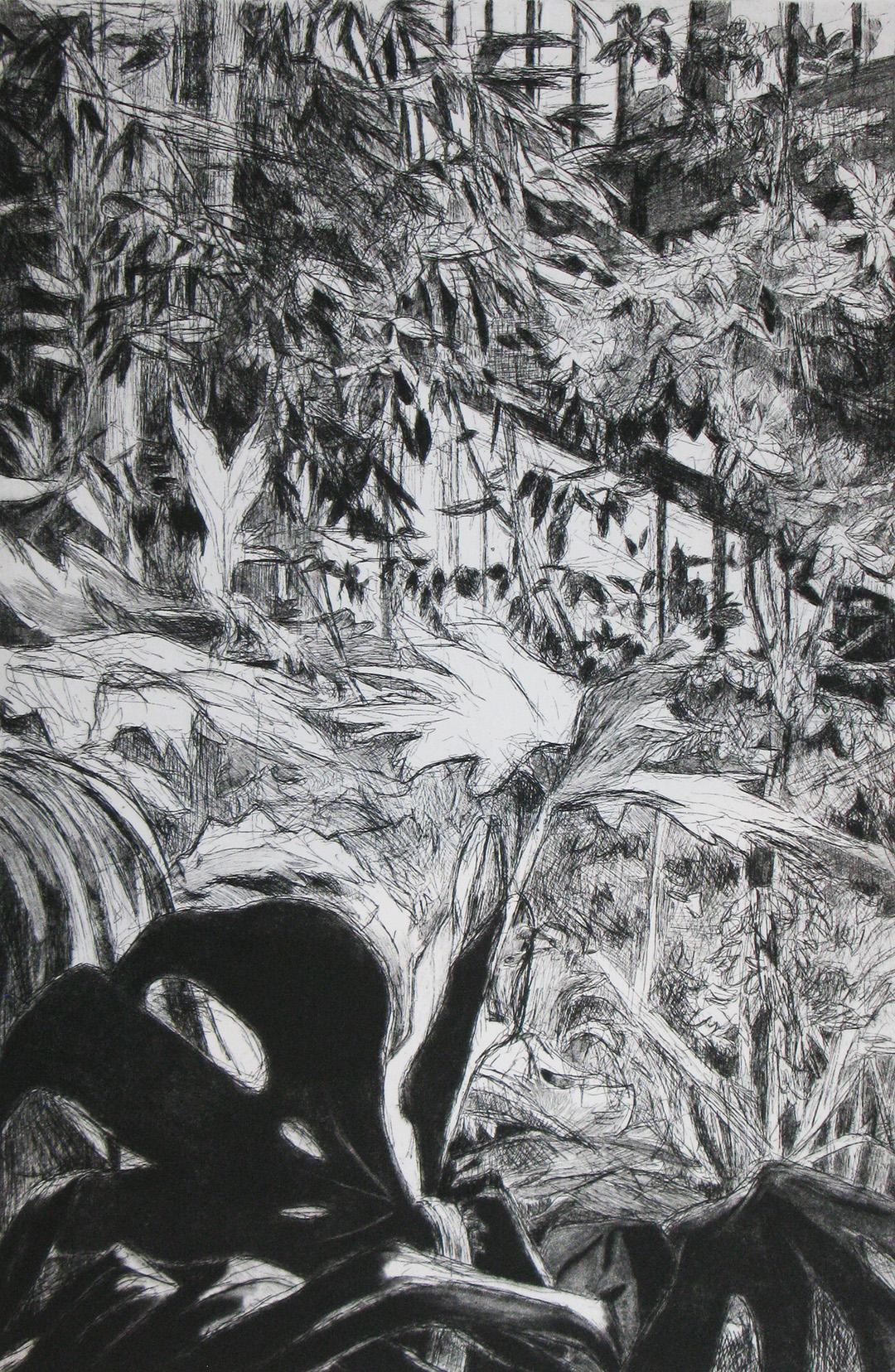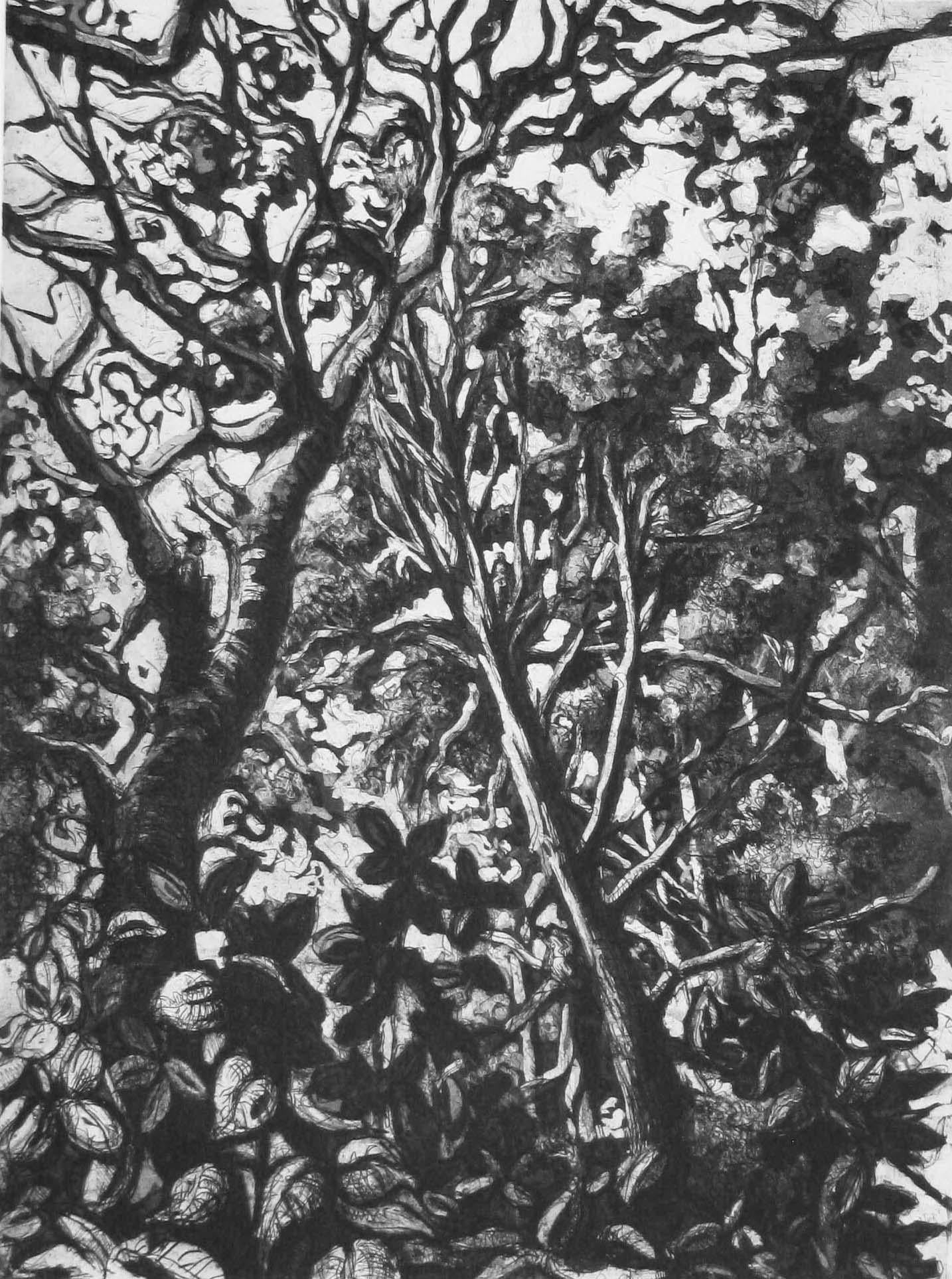John DobbsMan in Raincoat, Vintage Modern Watercolor Painting
About the Item
- Creator:John Dobbs (1931 - 1911, American)
- Dimensions:Height: 21.5 in (54.61 cm)Width: 18.25 in (46.36 cm)
- Medium:
- Movement & Style:
- Period:
- Condition:
- Gallery Location:Surfside, FL
- Reference Number:1stDibs: LU38211307762
John Dobbs
John Dobbs had many solo shows at galleries, universities and museums. His work was exhibited at the Museum of Modern Art, Whitney Museum of American Art, American Academy of Arts and Letters, Butler Institute of American Art in Ohio, and Salon Populiste in Paris. Dobbs’ paintings are part of the permanent collections of the Hirshhorn Museum, Washington, DC; the Montclair Art Museum, Montclair, New Jersey; the Neuberger Museum of Art, Purchase, New York; the Canton Museum of Art, Canton, Ohio and the Springfield Museum of Art, Springfield, Massachusetts. From 1972–96, Dobbs was a professor of art at John Jay College of Criminal Justice of the City University of New York. He was a member of the National Academy of Design, to which he was elected in 1976.
- ShippingRetrieving quote...Ships From: Surfside, FL
- Return PolicyA return for this item may be initiated within 3 days of delivery.
- Abstract Modernist Drawing of a Nude Man with Winged Figure, AngelBy John DobbsLocated in Surfside, FLAbstracted portrait of a nude man and an angel or winged figure by artist John Dobbs. This impressionistic depiction of the subject allows for stylistic references to Monet, and Sisley. John Barnes Dobbs...Category
20th Century Contemporary Figurative Drawings and Watercolors
MaterialsWatercolor
- Israeli Surrealist Painting Female Circus Performer Acrobat with CatBy Haya Graetz RanLocated in Surfside, FLVoluptuous, ala Fernando Botero, female circus performer with spectators and cat. Haya Ran was born in Holon, Israel in 1948 on the same date as the State of Israel was founded. From 1968 to 1973 Ran lived on Kibbutz Sasa. After her stay on the Kibbutz, she took courses on Graphics at The Technion 1975-1978. Tel Hai Institute Ran paints with water colors, using a multilayer method, which creates an illusion of tempera. Ran came up with this technique herself, influenced medieval painters. Ran says that the reds, browns, and golds in most of her feminist works are inspired by the performing arts: the circus, clowns, acrobats, dancers, and the fantastic. Haya Ran doesn’t identify today with any particular artistic school. Her works are born out of personal experiences and feelings. They come from the remembrances of her past, of her life and her experiences as a child, and from the fantasies she entertains about them. Her subjects emanate from her private, inner world. Haya Ran focuses on the world of the female. Her women are a peculiar lot. Their dimensions are offer wide, distorted, and grotesque, yet their poses and settings are as enticing and charming as they are sexually arousing. Others of Haya Ran’s women remain attached to elements of a lost childish innocence; dolls, wooden horses, masks, and wooden birds. Her works are executed with watercolors on paper. Her technique resembles that of Renaissance tempera. She superimposes strata and blends them together to create the impression of a past era. She creates not by putting down on paper her sudden impulses, but by devoting painstaking attention to the smallest details over countless hours. Selected Solo Exhibitions “Izraeliyot” / Dwek Gallery, Adenauer Conference Center, Mishkenot Sha’ananim, “Plowing” / Gerstein Gallery, Tel Aviv. Curated by Ora Krauss. “Suricattas” / Seemann Contemporary Art Gallery, Tel Aviv. Curated by Hagai Segev. “Encrypting” / The Israeli Artists Gallery, Kabri. Curated by Drora Dekel. Tokyo, Japan Museum of Art “O” “Calligraphy” / HaGalleria, Moshav Shoevah. Curated by Tirtzah Yallon Kolton. ESPACE RACHI, Paris, France. Curated by Hana Landau. Brucke Gallery, Braunschweig, Germany Gallery Vandorn, Paris, France Goldman Gallery, Haifa, Israel Grafica 3 Gallery, Haifa, Israel Select Group Exhibitions: Group Exhibitions The Second Biennale for Israeli Ceramics Eretz Israel Museum, Ramat Aviv, Tel Aviv Stern Gallery, Tel Aviv Artists:Reuven Rubin, Chaya Graetz Ran, Dorit Feldman, Anna Ticho, Abraham Hadad. Israeli Portrait Wilfrid Israel Museum, Oriental Art and Studies, Kibbutz Hazorea Artists: Shoshana Heimann,Genia Berger, Avraham Ofek, Jean David, Jakob Steinhardt, David Sharir, Ruth Schloss Ruth Zarfati Rudi Lehmann and others With this Ring - Wedding Ceremonies in Contemporary Art Beit Hatfutsot, Tel Aviv Artists: Nelly Agassi, Lital Dotan, Shai Azoulay, Avraham Baron Gallery, Beer Sheva Artists: Miki Kratsman, Adi Nes...Category
20th Century Contemporary Figurative Drawings and Watercolors
MaterialsPaper, Watercolor
- Original Graphic Hungarian Illustration Art Emma Heinzelmann Children's Book ArtLocated in Surfside, FLOriginal vintage gouache painting on poster board by Emma Heinzelmann (Hungarian, born 1930). Hungarian Peasant art, children fairytale themes, in psychedelic pop colors of the era. This framed painting depicts figures, a rooster and angels in flying above. Artist signature on farm gate. Housed in chrome mid century frame. Framed: 19.5 X 25.5 image is 15 X 21. Emma Heinzelmann ( Nyírbátor , March 14 , 1930 - ) Munkácsy Prize-winning Hungarian graphic designer and illustrator. Heinzelmann is a Hungarian children's book illustrator and graphic poster artist, who started her career during the 1950’s. She has a very unique drawing style that resembles children’s book illustrations. Working in psychedelic pop colors of the era. She Initially she studied to be a costume designer but she soon turned to graphic design. She graduated in 1950 from the clothing design department at the Junior High School in Török Pál Street which operated under the name Szépmíves Lyceum from 1946 to 1950. His master was György Farkas, a ceramicist, painter and sculptor. She creates her compositions using mainly watercolor and gouache paint. She often worked on illustrations for children’s books, since her style fits their themes. Her posters show the same playful Hungarian Folk Art style. She has produced artwork in almost all areas of applied graphics. posters, commemorative cards, designed album covers, postcards, advertising graphics, slide films, animation and cartoons. Her drawings were published in Dörmögő Dömötör and Kisdobos among others as well as in children's magazines. An entire generation of children grew up with her book illustrations, reading the fairy tales of Wilhelm Hauff or Hans Christian Andersen. Her story books and drawings are known well beyond our borders. She illustrated nearly 80 storybooks. She is a contemporary of Maurice Sendak and William Steig. Her work is of the same genre as the iconic Polish Cyrk poster artists. In her original fine art graphics grotesque and bitter elements often prevail, her figures are playfully ironic. Her drawings are made in a variety of ways, from pencil drawings to watercolor painting to collage techniques, from decorative spot effects to lace-like line drawings. She is no stranger to a kind of Art Nouveau influence, but it is always individual. It was never beautiful, but over the years its color scheme changed, thus confirming the lines of József Somogyi quoted earlier. She had several individual exhibitions, and for more than 10 years as a member of the Papp-Gábor group, her works could be seen in Dorottya Street. In 2009 , the book of art historian András Székely was published by Holnap Könyvkiadó under the title Emma Heinzelmann: fairy tales in the drawing. Awards and recognitions Lot Prize (International Poster Biennale, Warsaw) (1972) Ministry of Culture Award (1977, 1979) Brno Graphic Biennale (Bronze Award) (1980) Worker's Award (1984) Children's Book of the Year Award (1984) IBBY Andersen Diploma (1988) Hamburg Lifetime Achievement Award (1990) Albert Star Award (1992) Noémi Ferenczy Award (2005) Munkácsy Award (1984) Solo Exhibitions: Thought Bookstore, Budapest (1965) Cultural Center, Nyíregyháza (1974) Little Gallery, Komárom (1982) Art Gallery, Budapest. (1990) Vác (2010) Selected group exhibitions: International Children's Book Fair and Exhibition, Bologna (1971-1975) International Graphic Biennale, Brno (1966-1985) BIB (Children's book illustration biennial), Bratislava (1970-1985) XXXVI. Venice Biennale, Venice (1972) ARC. International Poster Biennale, Warsaw (1972) International Poster Triennale (B) (1972-1974) Weekdays, graphic exhibition, (1975) Calligraphy and typography, Institute of Cultural Relations, Budapest (1977) "Falrahányt pea", graphic exhibition, Institute of Cultural Relations, Budapest.(1978) International Poster Triennale (B) (1978) National Poster Exhibitions, Art Gallery, Budapest (1978)(1980) International Poster Exhibition (IR) (1979) Slide films: Fairy tales with Emma Heinzelmann's drawings: Under the Shore (1981) Goose Party (1981) Take a Little Trumpet (1982) The Bremen Town...Category
Mid-20th Century Folk Art Figurative Paintings
MaterialsGouache
- Whimsical Fishing Illustration Cartoon 1938 Mt Tremblant Ski Lodge William SteigBy William Steig (b.1907)Located in Surfside, FLLighthearted Illustration of Outdoor Pursuits This one of a fisherman signed "W. Steig" Provenance: from Mrs. Joseph B. Ryan, Commissioned by Joe Ryan for the bar at his ski resort, Mount Tremblant Lodge, in 1938. Mont Tremblant, P.Q., Canada Watercolor and ink on illustration board, sights sizes 8 1/2 x 16 1/2 in., framed. In 1938 Joe Ryan, described as a millionaire from Philadelphia, bushwhacked his way to the summit of Mont Tremblant and was inspired to create a world class ski resort at the site. In 1939 he opened the Mont Tremblant Lodge, which remains part of the Pedestrian Village today. This original illustration is on Whatman Illustration board. the board measures 14 X 22 inches. label from McClees Galleries, Philadelphia, on the frame backing paper. William Steig, 1907 – 2003 was an American cartoonist, sculptor, and, in his later life, an illustrator and writer of children's books. Best known for the picture books Sylvester and the Magic Pebble, Abel's Island, and Doctor De Soto, he was also the creator of Shrek!, which inspired the film series of the same name. He was the U.S. nominee for both of the biennial, international Hans Christian Andersen Awards, as a children's book illustrator in 1982 and a writer in 1988. Steig was born in Brooklyn, New York in 1907, and grew up in the Bronx. His parents were Polish-Jewish immigrants from Austria, both socialists. His father, Joseph Steig, was a house painter, and his mother, Laura Ebel Steig, was a seamstress who encouraged his artistic leanings. As a child, he dabbled in painting and was an avid reader of literature. Among other works, he was said to have been especially fascinated by Pinocchio.He graduated from Townsend Harris High School at 15 but never completed college, though he attended three, spending two years at City College of New York, three years at the National Academy of Design and a mere five days at the Yale School of Fine Arts before dropping out of each. Hailed as the "King of Cartoons" Steig began drawing illustrations and cartoons for The New Yorker in 1930, producing more than 2,600 drawings and 117 covers for the magazine. Steig, later, when he was 61, began writing children's books. In 1968, he wrote his first children's book. He excelled here as well, and his third book, Sylvester and the Magic Pebble (1969), won the Caldecott Medal. He went on to write more than 30 children's books, including the Doctor DeSoto series, and he continued to write into his nineties. Among his other well-known works, the picture book Shrek! (1990) formed the basis for the DreamWorks Animation film Shrek (2001). After the release of Shrek 2 in 2004, Steig became the first sole-creator of an animated movie franchise that went on to generate over $1 billion from theatrical and ancillary markets after only one sequel. Along with Maurice Sendak, Saul Steinberg, Ludwig Bemelmans and Laurent de Brunhofff his is one of those rare cartoonist whose works form part of our collective cultural heritage. In 1984, Steig's film adaptation of Doctor DeSoto directed by Michael Sporn was nominated for the Academy Award for Best Animated Short Film. As one of the most admired cartoonists of all time, Steig spent seven decades drawing for the New Yorker magazine. He touched generations of readers with his tongue–in–cheek pen–and–ink drawings, which often expressed states of mind like shame, embarrassment or anger. Later in life, Steig turned to children's books, working as both a writer and illustrator. Steig's children's books were also wildly popular because of the crazy, complicated language he used—words like lunatic, palsied, sequestration, and cleave. Kids love the sound of those words even if they do not quite understand the meaning. Steig's descriptions were also clever. He once described a beached whale as "breaded with sand." Throughout the course of his career, Steig compiled his cartoons and drawings into books. Some of them were published first in the New Yorker. Others were deemed too dark to be printed there. Most of these collections centered on the cold, dark psychoanalytical truth about relationships. They featured husbands and wives fighting and parents snapping at their kids. His first adult book, Man About Town, was published in 1932, followed by About People, published in 1939, which focused on social outsiders. Sick of Each Other, published in 2000, included a drawing depicting a wife holding her husband at gunpoint, saying, "Say you adore me." According to the Los Angeles Times, fellow New Yorker artist...Category
1930s American Modern Figurative Drawings and Watercolors
MaterialsIndia Ink, Watercolor, Illustration Board
- Costume Stage Drawing Medieval Jester or Harlequin Figure Watercolor PaintingLocated in Surfside, FLStage costume drawing in the style of Ballet Russe. unsigned older piece.Category
Early 20th Century Modern Figurative Drawings and Watercolors
MaterialsInk, Watercolor
- Israeli Judaica Watercolor Gouache Bar Mitzvah Boy Rabbi Painting Russian ArtistBy Ben Zion MagalLocated in Surfside, FLBen Zion Magal (1908 - 1999) Ben Zion Magal was born in 1908 in Kishinev - Russia and there, years later, graduated from the Art Academy. He arrived to Erertz Israel together with hi...Category
1960s Neo-Expressionist Figurative Paintings
MaterialsWatercolor, Gouache
- The Hunt - Drawing by Lars Bo - 1962By Lars BoLocated in Roma, ITThe hunt is an original moder artwork realized by Lars Bo in 1962. Watercolored china on paper. Hand signed and dated on the lower right margin. Hand wrtitten notes on the back I...Category
1960s Contemporary Animal Drawings and Watercolors
MaterialsInk, Watercolor
- Moon DancerLocated in London, GBDiscover the enthralling "Moon Dancer" drawing crafted by Rafael Melendez in 2020. This medium-sized drawing on paper seamlessly fuses various art forms, epitomizing the artist's rem...Category
2010s Contemporary Abstract Drawings and Watercolors
MaterialsGesso, Acrylic Polymer, Watercolor, Pencil, Archival Paper
- FRAMED Nude on a Sofa original sepia ink watercolor by PAULA CRAIOVEANUBy Paula CraioveanuLocated in Forest Hills, NYPart of my "Nude in Interior" series. Sepia Ink, Pencil and Graphite on Paper. Original sepia ink drawing on watercolor paper. Size is 48x33cm /19x13in. Size in mat and framed 70x5...Category
2010s Contemporary Figurative Drawings and Watercolors
MaterialsInk, Watercolor
- Tropique IILocated in STRASBOURG, FRNé à Strasbourg le 19 novembre 1965 Diplômé de sculpture de l’Ecole Supérieur des Arts Décoratifs de Strasbourg avec Patrick Lang “Toutes ces silhouettes qui habitent mon travail so...Category
2010s Contemporary Figurative Drawings and Watercolors
MaterialsPaper, Watercolor
- Jungle urbaine IVLocated in STRASBOURG, FRNé à Strasbourg le 19 novembre 1965 Diplômé de sculpture de l’Ecole Supérieur des Arts Décoratifs de Strasbourg avec Patrick Lang “Toutes ces silhouettes qui habitent mon travail so...Category
2010s Contemporary Figurative Drawings and Watercolors
MaterialsPaper, Watercolor
- Les égarées IIILocated in STRASBOURG, FRNé à Strasbourg le 19 novembre 1965 Diplômé de sculpture de l’Ecole Supérieur des Arts Décoratifs de Strasbourg avec Patrick Lang “Toutes ces silhouettes qui habitent mon travail so...Category
2010s Contemporary Figurative Drawings and Watercolors
MaterialsPaper, Watercolor

